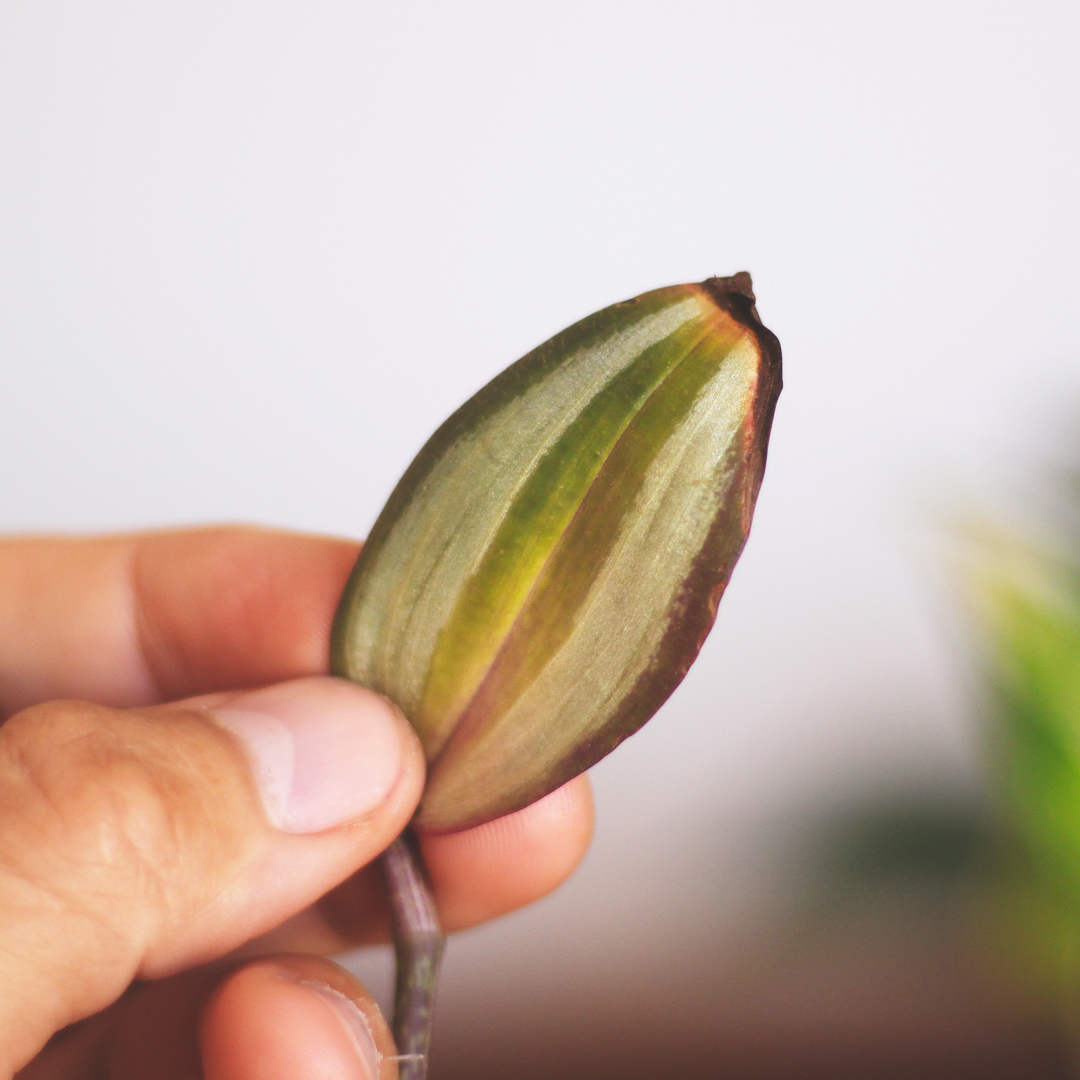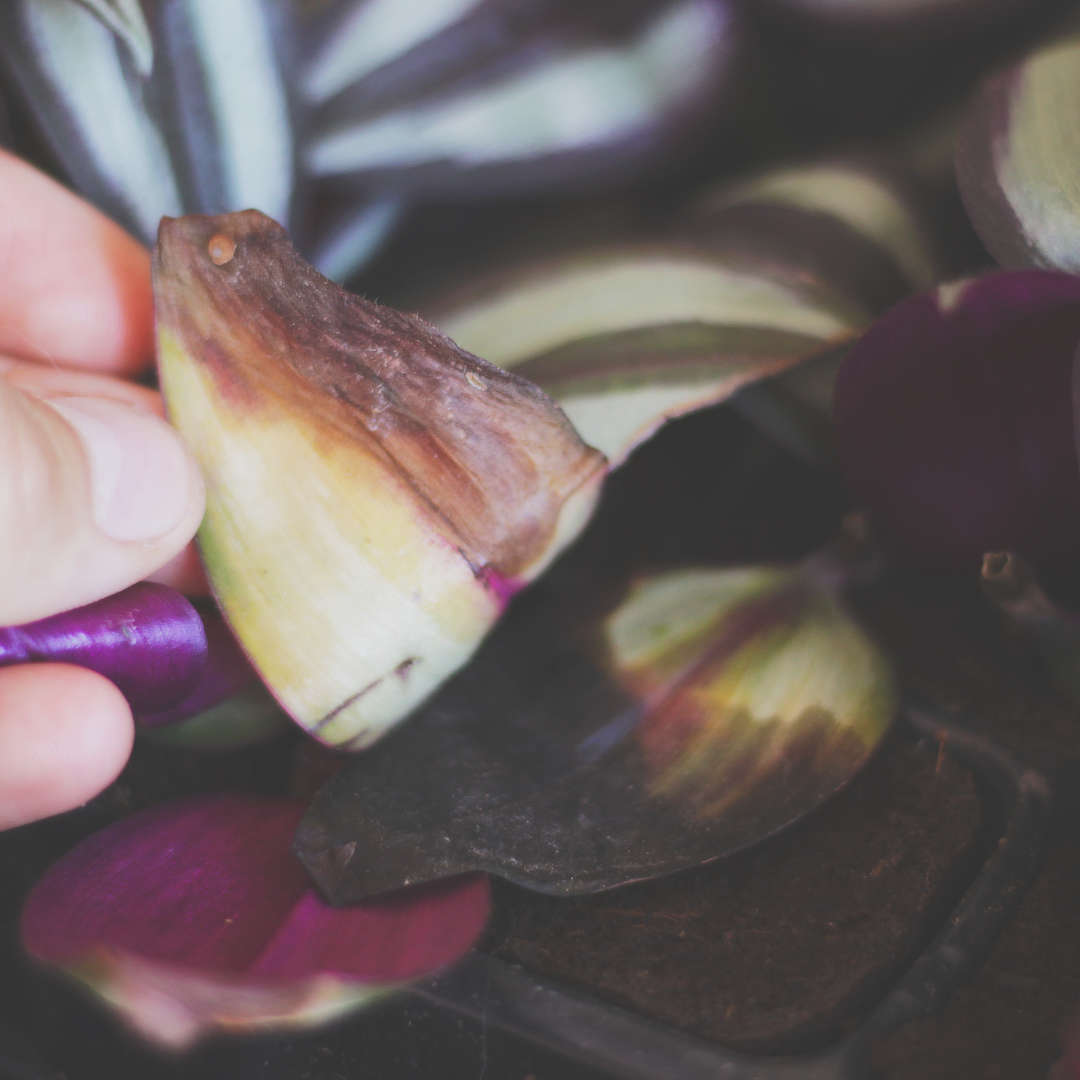Tradescantia Zebrina: Care, Secrets, Pruning and Propagation

Hello! In this guide we tell you all about the Tradescantia Zebrina 💜🌿
A houseplant that is back in fashion for its electric colors, its ease of cultivation and its rapid growth.
And we believe it is one of the most interesting plants to have at home. Not only for its beauty but for everything it can teach us about botany. Since it responds very quickly to stimuli and propagating it is as easy as ABC!

Below we also tell you some of their benefits and properties. We talk about other varieties, the most common questions and how to get one.
Let's go!
Characteristics of the Tradescantia Zebrina
The Tradescantia Zebrina is a evergreen plant (perennial) native to the New World that possesses very attractive silver-green leaves on the one hand, and electric purple on its back.

Its name was assigned by the German botanist Friedrich Bosse in honor of the English naturist and traveler John Tradescant Jr, who in the 17th century made several expeditions to the United States, in which he brought the first Tradescantia cuttings to Europe 🌱😎

And is that the Zebrina belongs to a family of more than 70 species of Tradescantia, which can be found in the wild from southern Canada to Argentina.
One of its main characteristics is its fast growth. In fact, in some areas of the United States, it is considered an invasive species.
But at home, where your growing area is limited to pots or small corners, this becomes an advantage. Whether in indoor or outdoor, Tradescantia Zebrina becomes a super ally when it comes to growing our personal garden.

Caring for the Tradescantia Zebrina
Their care at home is tremendously simple. Since it tolerates all kinds of conditions well. But it will not hurt to take into account the following tips on how to care for your Zebrina:
Temperature
The Tradescantia prefers warm climates, where temperatures do not usually drop below 10ºC. In indoors it grows perfectly. But if we place it outdoors, we will have to take care at night in the coldest nights. If the temperature often drops below 5ºC, it will have to be put inside.
On the other hand, it withstands temperatures well up to 35-37ºC as long as it does not receive direct sun. Or we will burn its leaves.

illumination
The Tradescantia will be best in abundant but indirect light. At most it should receive two hours of direct sunlight on its leaves. But it also survives in dimly lit rooms.
The good news is that it is a plant that quickly alerts you to a lack or excess of light.

Lack of light: its stems become thin and brittle. They stretch a lot and leafiness is lost. The color of its leaves is fading. The lower areas of the plant may show leaf rot.
Excess light: Thick stems with a high density of leaves, with some burnt tips and loss of color or yellowing in some leaves.
Irrigation
Once a week in summer. Once every ten days the rest of the year. Irrigation must be moderate. Although zebrin withstands humidity well, the substrate must always have good drainage or aeration.
We recommend using pots with a drainage hole. If there is no drainage, you can also place stones or small balls of expended clay at the bottom.

Another option that we recommend are the cocotakos, which include oxygen microcells throughout the substrate so that the roots can always breathe.
Fertilizer and Fertilizer
It will be enough to fertilize a couple of times a year. In early spring and after summer.
For this, we will use a universal fertilizer that has a balanced NPK, magnesium and micronutrients. For example, him liquid manure Compo which usually works quite well.
Humidity
Tradescantia comes from humid areas. So humidity is something that will not hurt it. It can be sprayed once a day if you are outside in very dry climates.
If it is indoors, it will not be necessary. And taking care of the irrigation and lighting will be enough so that it can be healthy.

What is very important is to control excess moisture in the substrate area, as it can cause stem rot and the appearance of mealybugs.
Diseases and Pests in Zebrina
Diseases do not usually appear in this plant, since it is quite resistant. As much some point leaf rot at the base of the plant or some yellow leaf.
It is also not usually the target of pests and unwanted visitors. The most common, if there is an excess of humidity due to bad irrigation or poor aeration, are the mealybugs. These appear on the leaves, but more frequently on the petiole (the area where the leaf meets the stem).
We can easily eliminate them by doing a weekly review and removing them with a little cotton and alcohol.

Another possible pest can be caterpillars. Although less frequent, they can be very disastrous for our plant if we do not do something on time. If we are late and there are too many, we may have to use an insecticide. The Neudorff Spruzit is quite effective and is also suitable for ecological agriculture.
Podra and Reproduction by cuttings of your Tradescantia Zebrina
Zebrina is a marvel when it comes to multiplying it with cuttings. The speed with which it begins to develop new roots is amazing. Usually less than a week.
Whether in water, earth, cocotakos or any other medium, as soon as it feels moisture, it will begin to take out new roots from the nodes.
Pruning is very simple. And also, we do not have to be afraid of overdoing it, because as we have seen, it grows so fast that it will soon be bushy again. To do this, preferably use scissors previously disinfected with alcohol.

Cutting is done exactly the same for pruning as it is for getting cuttings. And it must be done just above the petiole or knot (from where the leaves come out).
So that the new cutting has a good stem in the lower area to be easily pricked into a new pot or substrate. From this stem and its nodes the new roots will come out. The ideal is that the stem of the cutting is about 3-4 centimeters long.

And at the same time, we will be leaving the mother plant neat, without branches or stems hanging without leaves.
On the other hand, once we prick the cuttings on the ground, it will be important to keep the humidity high in the first week. And plenty of indirect light, but no direct sun.

About reproducing your tradescantia in water, although it is interesting as a learning, we do not recommend it if we want the plant to grow healthy and without deficiencies. Water is not the natural environment for the plant, which will cause stress and unbalanced root development. It can be done and it is quick, but it is not ideal.
Benefits, varieties and frequently asked questions
Despite its strong electric colors and eccentric appearance, the Tradescantia Zebrina it is not poisonous. In fact, it is the opposite, as it has many properties!
Zebrina as a refreshing drink
In Mexico, there are certain areas such as Chiapas or Tabasco, in which they prepare a refreshing drink by cooking its leaves and mixing the water later with lemon juice and sugar. The leaves are removed and the drink is taken cold.
This drink has many properties, among them: detoxifying for the kidney, anti-inflammatory and even diuretic.
I haven't tried it yet, but I won't be long! 🍹
What varieties of Tradescantia are there?
Although there are more than 70 species, we will tell you about some of the best known and most cultivated:-
Tradescantia Pallida or Purpúrea. It is one of the best known. It is a variety of completely purple leaves, more elongated and with a semi-tubular shape. Its growth is also very fast and the propagation is very simple.

- Tradescantia Fluminensis. Also called Variegata, it is a species very similar to Zebrina but that replaces the silver tones with light pink and white.
- Tradescantia Spathacea. It is a kind of mix between the Pallida and the Fluminensis. Well, it has longer leaves and the tones and colors of Fluminensis.
- Tradescantia Sillamontana. A somewhat rare variety, in which the green leaves present a kind of cotton cloth.
What is the Tradescantia flower like?
Almost all tradescantias, it features small purple or light pink flowers when it is time to bloom. In these flowers of no more than 1 or 2 centimeters wide, we find 5 or 6 pistils.

In general, it is advisable to remove or prune these flowers, if we want the plant to continue developing new stems and leaves.
Final Notes
As we have seen, Tradescantia Zebrina is not only a beautiful houseplant. It's also super practical and will make life easier for us in our little plant sanctuary.
Whether for beginners, amateurs or professionals, it is one of the most gratifying and successful plants. One of the essential 😌🌿
If you don't know where to get one or want to start growing it, we leave you a link where you can buy your Tradescantia Zebrina :)
